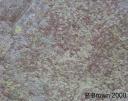Hi Folks here’s something to dwell over ‘The spiral that never vanished’
I was interested to read about the project at Castlerigg stone circle Cumbria and read with interest the abstract ‘The spiral that vanished’ JAS 2006. The spiral had originally been captured and photographed by Neil Stephenson in 1995 and was of course the focus of our attention. Barbara and I were on site when Stan Beckensall recorded the motif using his customary wax rubbing technique and I can confirm that the motif was clearly detectable through the rubbing paper since I made a similar wax rubbing of the spiral too. Prior to Stan’s recording of the spiral for inclusion in his book The Prehistoric Rock art of Cumbria’ duly published by Tempus in 2002‘ Barbara and I had conducted a photographic survey of all the rocks within the circle In our research at Castlerigg in late Autumn 1999 to check whether there were any other faint carvings present. Only partial lines of the spiral were evident in our photograph, regrettably we were not able to capture such a clear image as taken by Stephenson and Best in 1995 however in our digital photograph of the central section the spiral motif is still just visible through the lichen growth (a period then of five years). I photographed both sides of the stones including the circle’s outlier with an Olympus 1.3m pixel digital camera (the state art at the time!) and the information remains part of our archive.
In 1999 I had been informed by the LDNP authorities that at the beginning of the 20th century the monument had a ‘make-over’ or ‘clean-up’ and this consisted of the stones being scrubbed with a wire brush in an attempt to remove the late 19th C graffiti, a degree of abrasiveness that would most likely have obliterated or at least severely damaged any carving that may have been hewn onto the circle’s dense volcanic rock. The effect of natural lighting conditions affect photography and it may be that the conditions were ideal in 1995 because the only two reasonably clear photographs we have is that of Neil ‘s and a second captured separately by Hanna Casement, but I sincerely believe that the spiral captured by Stephenson in 1995 was visible at that time but what we see in the photograph is a residual or ’ghost’ image that has resulted from angular cuts made to the rock matrix that cracked and split its crystalline structure. The subsequent reflection or refraction of the rays of the sun at an acute angle may account for the rather ‘ethereal’ image in that photograph.
A period of twelve years has elapsed since the original photographs were taken and with the publication of Stan’s book I feel reasonably sure that knowledge of the spiral is in the public domain. It has occurred to us that there is a distinct possibility that at some time over the past decade some individual or individuals may have attempted to ‘see’ it for themselves and possibly taken it upon themselves to ‘clean’ the central section. This would almost certainly result in the obliteration of any reflecting grains within the rock surface and together with the subsequent lichen growth could account for the reason why the spiral hasn’t been seen in its entirety since 1995.
I believe the survey conducted by Durham University using the latest in laser technology failed because of the reasons discussed above, and in their subsequently inability to capture the image they then took the opportunity to publish an article (at great expense to the tax payers) to totally dismiss or recognise the photographs taken in 1995 and the simple recording techniques as used by Stan and myself that clearly confirm that the spiral does exist and that it is neither the remnant of a yoghurt pot ,nor a case of the ‘Emperor’s new clothes’. With the determination and enthusiasm of other dedicated independent rock art researchers (naturally using non-contact recording) further images of the spiral will be revealed.
STONEMAN
Posted above is a further faint spiral type motif discovered during our 1999 survey




Reblogged this on Ghosts & Monsters.
Oh my goodness! Amazing article dude! Thank you so much,
However I am experiencing difficulties with your RSS. I don’t know the reason why I can’t subscribe to it.
Is there anyone else having similar RSS problems?
Anyone that knows the answer can you kindly respond? Thanks!!
Was the spiral central on the west-facing vertical surface?
Or in the lower rh quarter?
I ask because at sunset on 23-03-2015 I took two photographs which *apparently* show two apparently concentric almost 180 degree segments in the lower rh quarter.
I feel the ideal time to photograph the spiral is after a long dry spell when the lichen has shrunk back on the rock surface
A dull day is ideal as the sun reflecting off the rock surface results in burning out detail
Stoneman
There’s always the chance that re-interpretation of the data from the laser scan might yield different results.
I know nowt about how they do it, but I just suspect that it’s not as precise a science as we’d like it to be.
I’m glad the subject is not closed. It’s an excuse to go back and look again 🙂
Thanks for posting Paul!
I will certainly go through the papers again.
Here’s a link to Nick Best and Neil Stevenson’s original photo:
http://rockartuk.fotopic.net/p10787892.html
Cheers,
Jan
Pity that what amounted to an ad hominem attack using science as a shield should have been blissfully unaware of the “clean up ” . We havtn’t heard the last of this I’m sure .